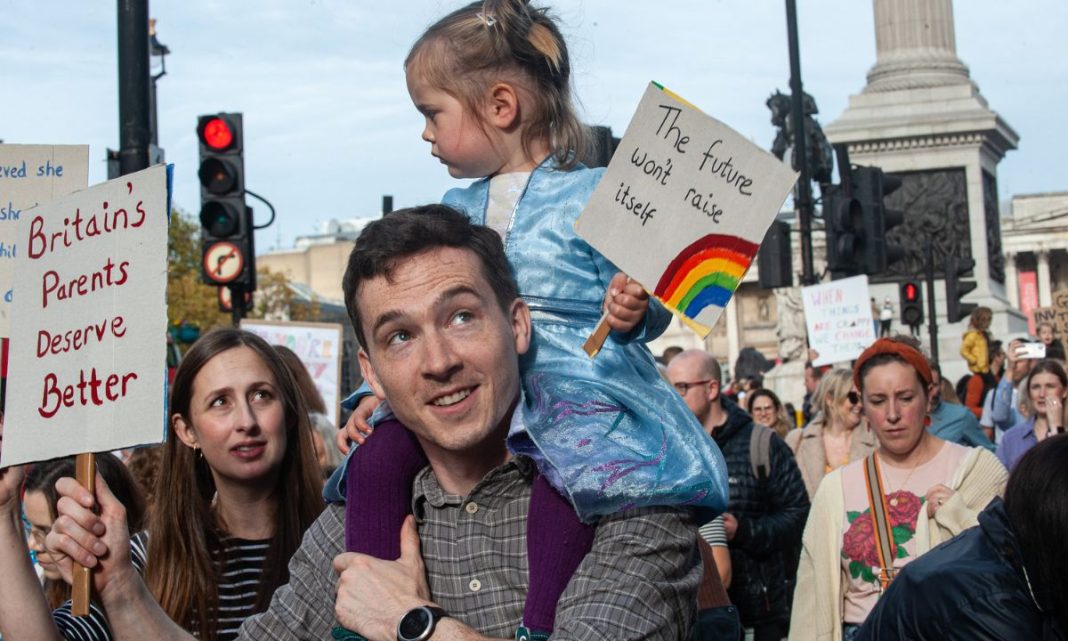There’s a new entrant in the increasingly global movement to improve access to affordable, quality child care. While New Mexico launches its take on universal child care, Vermont expands eligibility parameters for child care subsidies, and Canada implements an initiative to lower fees to an average of $10 Canadian a day, England recently made a change to its evolving child care system. However, criticism of the implementation demonstrates why the technical elements of policy design are so crucial — an important lesson for America as many states consider what’s next for their child care systems.
England’s new initiative, which launched Sept. 1, is called “Free Childcare for Working Parents.” It’s a government-funded effort designed to provide 30 hours of free child care a week, 38 weeks out of the year, for working families with children between 9 months and 4 years of age. Unlike the vision of universal systems put forth in Canada and New Mexico, England’s goal is targeted towards low- and middle-income families. To qualify, each working parent in a family must make less than 100,000 pounds a year, which as of the current exchange rate is a little more than $130,000. There is also a minimum income requirement that each parent must meet, which is equivalent to working at least 16 hours a week at the national minimum wage.
Get stories like this delivered straight to your inbox. Sign up for The 74 Newsletter
This isn’t a brand new system, but rather one that builds upon existing policies. For example, as it stands, English families that have a 2-year-old can get 15 hours of free child care if they get “extra support” — in American terms, public assistance or welfare — which they can receive for a number of reasons including their income level or if they’re raising a child with a disability. Additionally, all 3- and 4-year-olds in England get 15 hours of free care as a matter of entitlement, with no eligibility check. In theory, the recent expansion increases access so more families can get more hours of free child care. But in practice, it is proving to be a complicated program that’s leading to unintended consequences related to child care capacity and equitable access for families.
When it comes to child care supply, the initiative has raised a number of problems. Like the U.S., England is also plagued by child care shortages, which few experts seem to think this new policy change addresses. In fact, some warn that it may actually be worsening the issue because the free child care promise has proven even more popular than anticipated, but the rate the government is funding is lower than the true cost of care. In short, England is running smack into the same wall as many child care reforms in other countries, including America: they aren’t paying enough. For years, child care providers and advocacy groups have pointed out that the per-hour reimbursement rate is too low to run sustainable operations, and in many cases providers have been balancing the books by raising the cost of non-subsidized hours. The expansion of free hours may therefore, perversely, damage child care supply by turning program budgets upside-down, and increasing fees for the hours parents do pay for — which will fall at the feet not just of affluent families, but low-income households too.
Even in a Nation With Robust Family Policies, Stay-at-Home Parents Struggle
The Guardian reported that the initiative has already left some families with higher fees, including Roo, a civil servant whose family is ineligible for the new program because her partner’s annual income is too high. “Our fees went up by 30% in April,” Roo said in the article, adding that it was an increase of about 330 pounds a month, or about $430. The Guardian goes on to note that some parents may now be incentivized to cut back their hours or otherwise shift their earnings around to get under the 100,000 pound threshold for eligibility. On the other end of the income spectrum, an analysis by New Economics Foundation, a left-leaning British think tank, concluded that just 11% of English families in the lowest income quintile will qualify for the full 30 hours because they’re not meeting the income requirements, meaning they too may have to rely more on the unsubsidized hours that could be getting more expensive.
To add to the cost issues, the initiative states up front that families may be asked by their child care providers to pay additional fees for “extras” like meals, diapers and activities — and that they can opt to pay or discuss alternatives. There have been reports of child care programs hiking fees for these extras as a way to try and adapt. Neil Leitch, CEO of the Early Years Alliance, England’s largest early educator membership organization, told The Independent that if the funding for the free child care initiative is continually inadequate, “the infrastructure will collapse over a period of time.” He warned: “I can’t say it will be one year or five years, but you can bet your bottom dollar if you don’t give somebody enough money to deliver a service, at some point they stop.”
Many of these challenges track back to the first-order choice to expand child care by having the government cover the cost for a given number of hours per week. That option stands in stark contrast to government-subsidized models in Canada and the Nordic nations, which lean heavily on covering programs’ monthly operational costs in exchange for low fees. It also differs from the approach taken in some American states, including Vermont and New Mexico which rely on a high concentration of voucher-like subsidies. The hours-based model has meager evidence of being effective, and places that have tried it, like New Zealand, similarly encountered major struggles.
As the United States grapples with how to evolve its child care policies, there are lessons to be learned from England’s implementation. Political communications expert Anat Shenker-Osorio often advises her clients to “sell the brownie, not the recipe,” signaling that it’s more effective to hype the outcome, rather than how it will operate, but the recipe also really matters. Without thoughtful policy design to back it up, even a strong idea with the right messaging could end up having limited real-world impact and bad press.
Moreover, the negative downstream effects of England’s inadequate per-hour funding demonstrates, yet again, that child care cannot be fixed on the cheap, while the convoluted nature of the new system illustrates that layering a new program on top of an existing one can be less effective than coming up with a single comprehensive policy.
That said, it’s important to recognize that multiple things can be true at once. The desire of England’s Labour Party leaders to expand provision of free child care is laudable, and some families are already benefiting mightily. The popularity shows just how much parents are looking for support around care, and leaders shouldn’t be knocked for their policy ambition. At the same time, a poorly developed child care system can end up harming families and providers, and could even turn the public against a good underlying idea.
It’s early days for England’s new child care initiative, and there’s still time to accept the weaknesses of the underlying policy design and adjust course. In fact, that would be a lesson in and of itself.

